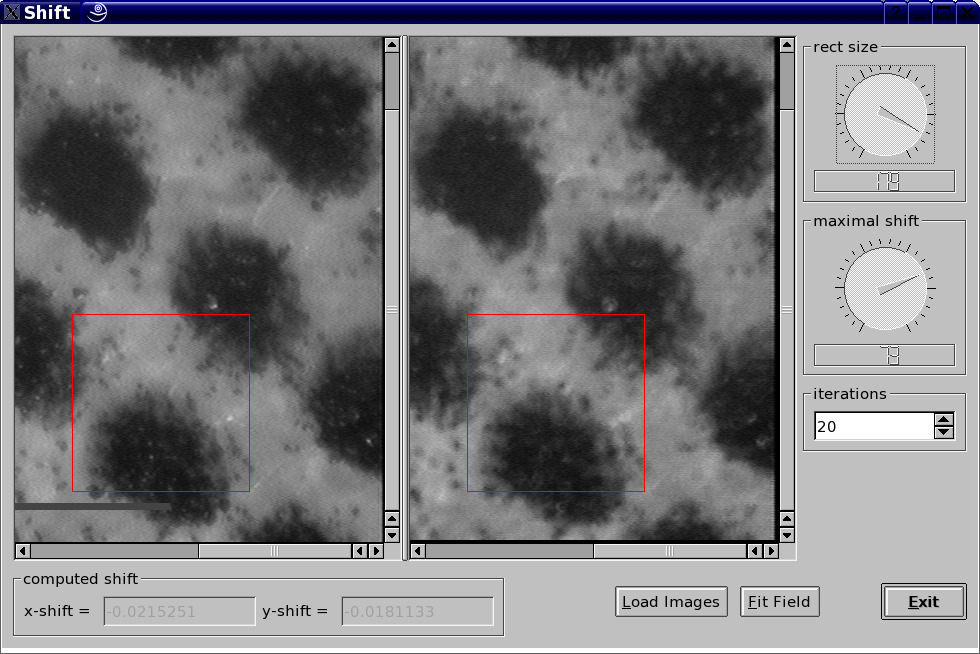Gradient Based Motion Estimation
m |
|||
| Line 25: | Line 25: | ||
The result can be improved by applying the least square algorithm iteratively to the compensated images. | The result can be improved by applying the least square algorithm iteratively to the compensated images. | ||
| + | [[Category:Micron]] | ||
| + | [[Category:Mimas]] | ||
Revision as of 12:47, 10 March 2006
Using gradient based motion estimation is good at detecting sub-pixel shifts. During an investigation on depth of defocus, this software was developed for compensating the misalignment of a focus-drive.
The local gradient <math>\cfrac{\delta g}{\delta\vec{x}}</math> of the gray values and the gradient in time <math>\cfrac{\delta g}{\delta t}</math> are related to each other in the first order:
<math>\Big(\cfrac{\delta g}{\delta x_1}(\vec{x},t)\ \cfrac{\delta g}{\delta x_2}(\vec{x},t)\Big)^\top\cdot\vec{v}(\vec{x},t)\approx-\cfrac{\delta g}{\delta t}(\vec{x},t)</math> where <math>g\in\mathbb{R}^2\times\mathbb{R}\mapsto\mathbb{R}</math> is a video and <math>\vec{v}\in\mathbb{R}^2\mapsto\mathbb{R}^2</math> a motion vector field.
Using the model <math>\vec{v}\big(\begin{pmatrix}x_1\\x_2\end{pmatrix}\big)=\begin{pmatrix}a_1+b_1\,x_1\\a_2+b_2\,x_2\end{pmatrix}</math> this becomes a least square problem: <math>\begin{pmatrix} \cfrac{\delta g}{\delta x_1}(\vec{p_1}) & p_{1,1}\,\cfrac{\delta g}{\delta x_1}(\vec{p_1}) & \cfrac{\delta g}{\delta x_2}(\vec{p_1}) & p_{1,2}\,\cfrac{\delta g}{\delta x_2}(\vec{p_1}) \\ \vdots & \vdots & \vdots & \vdots\\ \cfrac{\delta g}{\delta x_1}(\vec{p_n}) & p_{n,1}\,\cfrac{\delta g}{\delta x_1}(\vec{p_n}) & \cfrac{\delta g}{\delta x_2}(\vec{p_n}) & p_{n,2}\,\cfrac{\delta g}{\delta x_2}(\vec{p_n}) \\ \end{pmatrix} \begin{pmatrix} a_1\\b_1\\a_2\\b_2 \end{pmatrix}= \begin{pmatrix} -\cfrac{\delta g}{\delta t}(\vec{p_1})\\\vdots\\ -\cfrac{\delta g}{\delta t}(\vec{p_n}) \end{pmatrix} +\vec{\epsilon} </math> where <math>a_1</math>, <math>a_2</math> are denoting the shift and <math>b_1</math>, <math>b_2</math> are denoting the scale between the two images.
The result can be improved by applying the least square algorithm iteratively to the compensated images.
